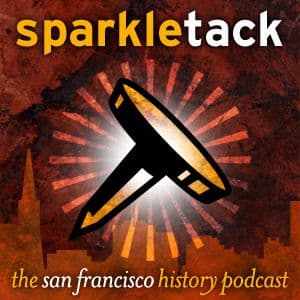Society & Culture
THIS WEEK'S PODCAST TRANSCRIPT:1879: Stoddard, Stevenson, and Rincon Hill Sometime in 1879: The house on Rincon Hill Last week I read to you from In the Footprints of the Padres, Charles Warren Stoddard's 1902 reminiscences about the early days of San Francisco. That piece recounted a boyhood adventure, but this book is full of California stories from the latter years of the 19th century; some deservedly obscure, but some that ring pretty loud bells. Todays' short text is a great example of the latter, one that dovetails beautifully with two other San Francisco stories, both of which I've talked about at Sparkletack: the story of the Second Street Cut and the visit of Robert Louis Stevenson. The now all-grown-up Stoddard had returned to San Francisco after the Polynesian peregrinations that would inspire his best-known work, and Stevenson had just arrived from Scotland in hot pursuit of the woman he loved. The two authors hit it off, and -- as you'll hear at the end of today's Timecapsule -- it's to Stoddard and the house on Rincon Hill that we owe Stevenson's eventual fascination with the South Seas. South Park and Rincon Hill! Do the native sons of the golden West ever recall those names and think what dignity they once conferred upon the favored few who basked in the sunshine of their prosperity? South Park, with its line of omnibuses running across the city to North Beach; its long, narrow oval, filled with dusty foliage and offering a very weak apology for a park; its two rows of houses with, a formal air, all looking very much alike, and all evidently feeling their importance. There were young people's "parties" in those days, and the height of felicity was to be invited to them. As a height o'ertops a hollow, so Rincon Hill looked down upon South Park. There was more elbow-room on the breezy height; not that the height was so high or so broad, but it was breezy; and there was room for the breeze to blow over gardens that spread about the detached houses their wealth of color and perfume. How are the mighty fallen! The Hill, of course, had the farthest to fall. South Parkites merely moved out: they went to another and a better place. There was a decline in respectability and the rent-roll, and no one thinks of South Park now, -- at least no one speaks of it above a whisper. read on ...

